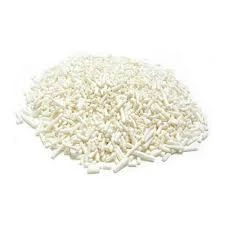
primary emulsifier
The Role of Primary Emulsifiers in Food Industry
Emulsifiers play a crucial role in the food industry, particularly in the formulation of various food products. Among them, primary emulsifiers are essential agents that facilitate the mixing of two immiscible liquids, typically oil and water. The ability of emulsifiers to stabilize these mixtures is vital for creating consistent textures and product quality in a wide array of food applications.
Understanding Emulsification
Emulsification is a process that involves the dispersal of one liquid into another immiscible liquid, creating a stable emulsion. This process is particularly important in foods such as mayonnaise, salad dressings, sauces, and dairy products, where it is necessary to keep oil and water mixed without separating. Without emulsifiers, these products would quickly separate, leading to loss of quality and undesirable sensory attributes.
Primary emulsifiers are substances that provide the necessary surface tension reduction to allow for the formation of stable emulsions. They work by orienting themselves at the interface of the oil and water phases, with one part being hydrophilic (water-attracting) and the other being lipophilic (oil-attracting). This dual affinity allows them to reduce the surface tension between the two liquids, facilitating the physical process of emulsification.
Types of Primary Emulsifiers
There are various types of primary emulsifiers utilized in the food industry, each with its unique characteristics and functionalities. Some common examples include
1. Lecithin Extracted from soybeans, egg yolks, and sunflower seeds, lecithin is a natural phospholipid that serves as an effective emulsifier. It is widely used in chocolate, margarine, and baked goods.
2. Mono and Diglycerides These are derived from glycerol and fatty acids through the process of fat hydrolysis. They are commonly used in bakery products, ice creams, and processed foods to enhance texture and prevent separation.
3. Polysorbates These synthetic emulsifiers, such as Polysorbate 80, are used in a variety of applications, including oily sauces and dressings. They are efficient in stabilizing emulsions and improving mouthfeel.
primary emulsifier

Benefits of Using Primary Emulsifiers
The incorporation of primary emulsifiers into food formulations offers numerous benefits
- Stability Emulsifiers enhance the stability of food products by preventing phase separation. This results in longer shelf life and better quality over time.
- Texture Improvement Emulsifiers contribute to the desired mouthfeel and texture of food products, making them more appealing to consumers.
- Enhanced Flavor Release Primary emulsifiers can help in the uniform distribution of flavors throughout the product, leading to a more enjoyable eating experience.
- Reduced Fat Usage By stabilizing emulsions, emulsifiers can help achieve similar textures and flavors with lower fat content, catering to health-conscious consumers.
Conclusion
The importance of primary emulsifiers in the food industry cannot be overstated. They are instrumental in creating stable emulsions that enhance the quality, texture, and shelf life of various food products. As consumer demands for better flavors and healthier options continue to evolve, the role of emulsifiers will likely expand, leading to more innovative and functional food formulations. Understanding the science behind emulsification and the function of primary emulsifiers is essential for food manufacturers aiming to meet these demands and deliver high-quality products to consumers.
-
Aluminum Hydroxide: Quality Gels & Dried Gel AntacidNewsAug.31,2025
-
Buy High-Quality Trichloroisocyanuric Acid for Sale | TCCA 90% SupplierNewsAug.30,2025
-
Pure Sodium Dichloroisocyanurate Dihydrate | Powerful DisinfectantNewsAug.29,2025
-
Industrial Chemicals: Quality & Purity for Every IndustryNewsAug.28,2025
-
Nitrile Rubber Honoring Strict Production StandardsNewsAug.22,2025
-
Aspartame Ingredients Honoring Food Safety ValuesNewsAug.22,2025
-
Fertilizer for Balanced Plant NutritionNewsAug.22,2025
Hebei Tenger Chemical Technology Co., Ltd. focuses on the chemical industry and is committed to the export service of chemical raw materials.
-

view more DiethanolisopropanolamineIn the ever-growing field of chemical solutions, diethanolisopropanolamine (DEIPA) stands out as a versatile and important compound. Due to its unique chemical structure and properties, DEIPA is of interest to various industries including construction, personal care, and agriculture. -

view more TriisopropanolamineTriisopropanolamine (TIPA) alkanol amine substance, is a kind of alcohol amine compound with amino and alcohol hydroxyl, and because of its molecules contains both amino and hydroxyl. -

view more Tetramethyl Thiuram DisulfideTetramethyl thiuram disulfide, also known as TMTD, is a white to light-yellow powder with a distinct sulfur-like odor. It is soluble in organic solvents such as benzene, acetone, and ethyl acetate, making it highly versatile for use in different formulations. TMTD is known for its excellent vulcanization acceleration properties, which makes it a key ingredient in the production of rubber products. Additionally, it acts as an effective fungicide and bactericide, making it valuable in agricultural applications. Its high purity and stability ensure consistent performance, making it a preferred choice for manufacturers across various industries.





